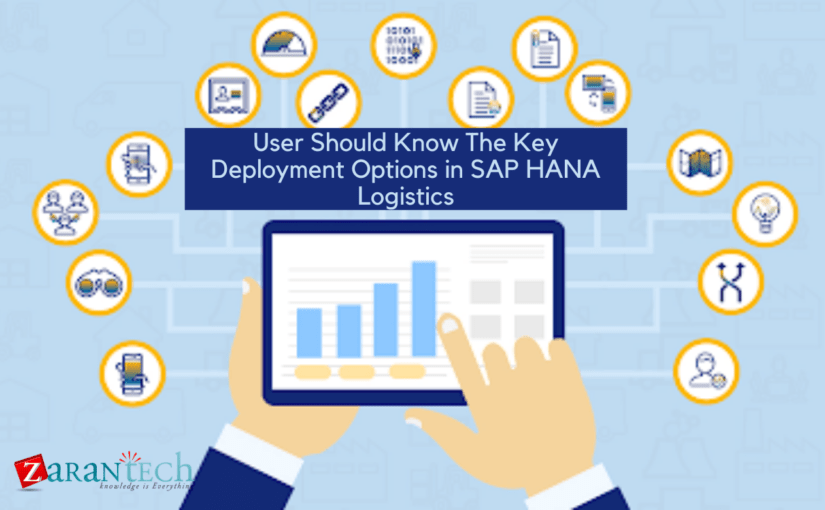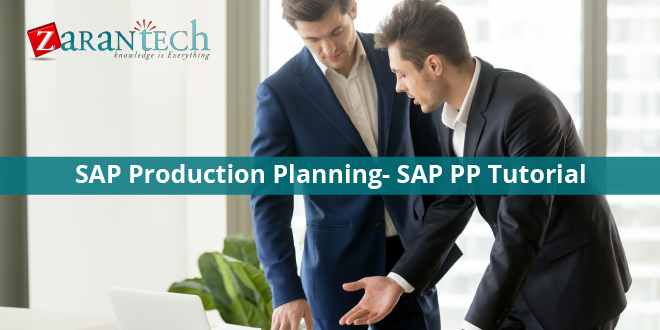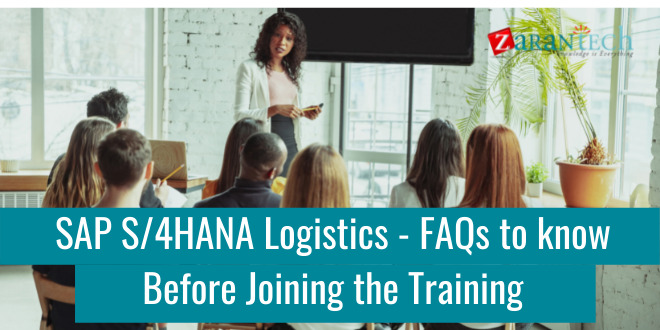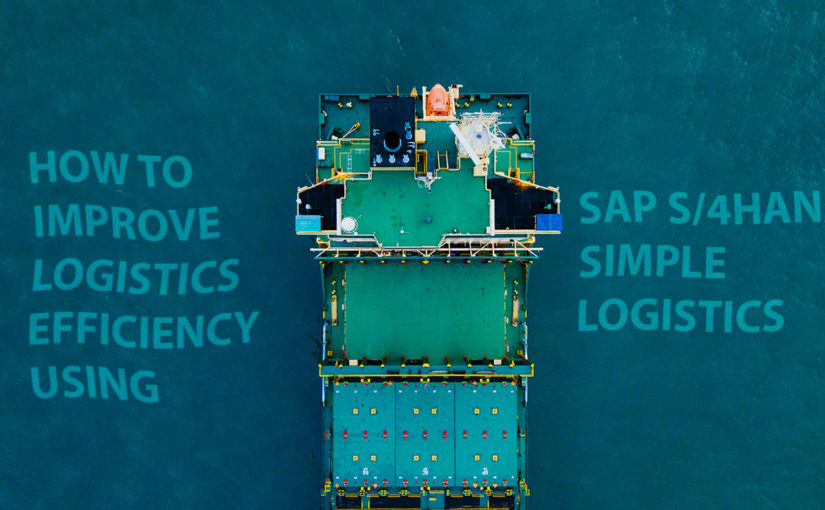An Overview of SAP Material Management
Category: SAP S/4HANA Logistics Posted:Jun 12, 2020 By: Alvera AntoIn this SAP MM blog article, you will find different aspects of the SAP MM Module, such as its functionalities and operations, as well as different components and subcomponents including master data, purchasing, billing, human resource management, and inventory management.
In this SAP MM blog article, I will cover these topics which are given below :
- What is SAP MM Module?
- Features of SAP MM Module
- Advantages of SAP MM Module
- Procurement Process
- Types of Procurement
- Basic Procurement
- Special Procurement
- Structure of an Organization
- SAP R/3
- Procurement Cycle
- Inventory Management
SAP MM Module
We will begin this SAP MM blog article by learning the SAP MM Module. SAP MM Module is an integral part of the SAP ERP Software. SAP Material Management is used by various companies to handle their purchasing and transactional data as it is both cost and time-efficient. SAP Material Management belongs to the logistic function which helps the industry from procurement to delivery of products. SAP MM Module consists of various units to handle material procurement and vendors, inspect the material condition and quality, as well as payment of the vendors.
What is SAP Business Process in SAP MM Module?
SAP Business Process is an integral part of the SAP MM Module. It handles the sales, Manufacturing, Distribution, Unit Maintenance, Planning, and Warehouse Management of a company. It helps manage the Inventory and Human Resources of a company.
Checkout the Article- A Completes Guide of SAP Simple Logistics
Features of SAP MM Module
Some of the key features of SAP MM Module are as follows:
- It deals with Inventory Management and Material Management.
- It is a process that keeps in check the scarcity or violation in the Supply Chain of a company.
- It Manages Procurement activities.
- To accelerate productivity and cut costs, it manages the Material (products/services) and resources of a company.
- It handles Master Data, Valuation of Material, Material Requirement, Invoice Verification, etc.
Advantages of SAP MM Module
- It minimizes the cost of operations.
- It reduces inventory losses by removing unnecessary or obsolete material.
- Automatic Material Management and procurement activities lead to a smoother as well as efficient process.
Procurement Process In SAP MM Module
This article will certainly help you to understand about the Procurement Process in an SAP MM module. This SAP MM blog article will show the various kinds of Procurement Process.
Every company requires material or service to satisfy their requirements, and thus, they purchase them. This procedure is referred to as procurement.
Types of Procurement in SAP MM Module
Learn about various types of procurement via this SAP MM blog article.
There are two types of procurement:
- Basic procurement
- Special procurement
- Basic Procurement
The procedure of buying the right material and services in an appropriate quantity at the lowest rate and at the right time is referred to as Basic Procurement.
Types of Basic Procurement Lifecycle?
There is various procurement lifecycle which is as follows:
- Gathering Information: The Procurement Process initiates with the collection of details about a product and its quantity. After that according to the required products and services, suppliers must be contacted.
- Suppliers: Based on the demand, suppliers are contacted and asked to fulfill the demand.
- Consumption, Maintenance, and Disposal: Products and services get evaluated according to their performance. Based on their performance, it gets determined whether the order will get repeated from the same supplier or a new supplier will be contacted.
- Special Procurement
The Stocks which do not belong to a company and stored in a certain location are referred to as special stocks. The approach to procure these stocks is known as Special Procurement.
Types of special procurement and unique stocks are:
- Consignment Stocks: The material which is available at store premises is known to be consignment stocks. This material belongs to the seller, but to use it you have to pay the vendor.
- Third-party Processing: In third-party processing, the company passes its orders to the vendors who deliver them directly to the customers. These orders are updated inside purchase orders, purchase requisitions, and sales orders.
- Pipeline Handling: In pipe handling, the material is not stored by the company; rather, it is stored by the vendor itself. The material is ordered from the vendor whenever it is required by the company.
- Stock Transport Order: When one plant requires some goods, it orders them from another plant of the company. These goods are obtained using the stock transport order. The transfer of goods can monitor using this stock transport order.
Structure of an Organization In SAP MM Module
An organization is formed of various levels and several units. These units follow a regular hierarchy. Each of these units has a special function that constitutes together to describe the structure of an organization.
- Client
- Company code
- Plant
- Storage location
- Purchasing organization
- Purchasing group
- Client: A client is a commercial unit that has its own Master Data consisting of independent table sets. It is at the top of the hierarchy in the SAP system. All organizational levels have accessibility to all the data saved at the client level.
- Company Code: A Company Code is the smallest unit in a company that comes under the client level. It has an independent accounting unit that maintains its own profit, loss, and balance statement.
- Plant: A unit within a company that is responsible for the production of goods and making them available for the company is referred to as a plant. A plant unit consists of a manufacturing facility and a Warehouse.
To define a plant, follow the below steps:
Step 1: Enter transaction code ‘SPRO’ in the command field as well as press Go into
Step 2: Adhere To the Menu Course
Step 3: Click on Define Plant
Step 4: Click New Entries
Step 5: Go into the new plant code, upgrade the name of the plant, and after that press Get in
Step 6: Update the address of the plant and press Get in
- Storage location: A storage Location is a unit within a company that is used to store material stocks and goods available in a plant. A plant can have multiple storage locations where all the data related to the storage location is stored.
- Purchasing Organization: Purchasing organization is a unit within a company that is responsible for the procurement tasks. The purchasing company manages external procurement as well. When a purchasing organization unit is present at the client level, then it is called a centralized purchasing organization. A purchasing organization can also exist at the company level or at the plant level. In such circumstances, it is termed as a company-specific or plant-specific purchasing organization.
- Purchasing Group: The Purchasing group of an organization is a unit that is responsible to perform day-to-day procurement activities of an organization. It is a group of purchasers who are responsible for procurement activities.
Go through our SAP S/4HANA Simple Logistics Interview Questions to crack the Interviews.
SAP R/3
SAP R/3 is a software that was produced by the German corporation, SAP AG (now SAP SE). This software was developed to coordinate all resources and activities needed for a business operation such as Human Resource Management, order fulfillment, billing, and production planning.
SAP R/3 is used to store data in real-time. Now, data stored in SAP R/3 is divided into 2 categories:
- Transactional Data
- Master Data
- Transactional Data
Transactional Data is the data that is related to the processing of a business transaction. It is the data that belongs to the payment made to vendors against their orders or the payment taken from a customer for the goods.
- Master Data
Master Data is the main data that is utilized for any transaction within a company. It is centrally stored in an organization and anyone can access it. However, the data requires to be upgraded on time.
SAP Master Data is of two kinds:
- Vendor Master Data
- Material Master Data
Vendor Master Data: Vendor Master Data is a collection of information about all vendors associated with a company. It contains information like a vendor’s name, age, address, type of material which he (Vendor) sells or buys, etc.
Vendor master data is divided into three categories:
- General Data: The data which is maintained at the client level and is valid for all organizational levels is called the General Data.
- Accounting Data: Accounting Data is related to the expenses of the material procured or sold. All this data is kept at the organizational level.
- Purchasing Data: Purchasing Data holds the data of the material or services that need to be procured from suppliers or vendors. The information related to purchasing data is maintained at the Purchasing organization level.
Vendor Account Group
All vendors listed under a company are categorized on the basis of their requirements. Vendors having similar characteristics are organized with each other under one single account which is called a vendor account group.
Number Range
When a vendor master record is created, a unique number is allocated to that vendor to recognize it.
A vendor can be assigned the number in two ways:
- External number assignment: In this assignment, when you create a record for the vendor, you need to enter your own unique number which needs to contain alphabets and digits.
- Internal number assignment: In this assignment, while creating a record for the vendor, a unique number is automatically generated by the system.
Vendor Master Creation
A vendor master is used to storing a list of vendors from where a company can sell or produce goods.
Material Master Data: The material-specific data is stored utilizing the Material Master Data. The stored data consists of information regarding the materials that a company needs to procure, store, produce, or sell.
There are various departments in a company. Each of the departments works on some particular material and they enter different information regarding their material. So, each department has its own view of the material master record.
Characteristics of Material Master Data:
Material Types
All material having common traits is assembled with each other and they are allocated to a material type. It helps differentiate the materials and handle them systematically.
E.g. the finished products and the Raw Materials can be organized into corresponding material types.
Material Groups
A Material Group is an extensive variety of material types. Materials that have common attributes are picked together and assigned to a material group.
E.g., food products, electrical items, stationery, etc. are materials that can be organized according to their types.
Number Range
When a material master record is created, a unique number is allocated to every material to recognize it.
The material can be assigned the number in two ways:
- External number assignment: In this assignment, when you create a record for material, you have to enter your own unique number which needs to consist of alphabets and digits.
- Internal number assignment: In this assignment, while creating a record for material, a unique number is automatically generated by the system.
Material Master Creation
Material Master is used to keeping all the details regarding the material that a company generates, markets, stores, or procures. It stores all the information at the central data which is available for every unit present at various levels.
MM flow in SAP using Procurement Cycle
Every business organization requires materials or services to satisfy their business needs. The process of acquiring materials and services is called Procurement.
Different steps utilized to acquire materials as well as services that form a MM Circulation in the sap procurement cycle. The steps of MM circulation in SAP are:
- Determining the requirement
- Purchase Requisition
- Generating the purchase order
- Generating goods receipt
- Generating the invoice
Let’s look at each step of procurement lifecycle in detail:
- Determining the requirement: it is the primary step in the Procurement Lifecycle. A company identifies the number of materials or services needed. After the determination of the need, a list of products is created that is accepted by the senior authority to procure.
- Purchase Requisition: An organization collects all its requirements, and after that, a list of requirements is made that is provided to the purchasing organization to acquire the products mentioned in the list.
- Generating the purchase order: After the approval, a purchase order is generated which is sent to the vendor to obtain the needed material. A purchase order holds details regarding the vendor’s name, address, and date of delivery.
- Generating goods receipt: When the vendor processes the purchase order and delivers it to the concerned party, the process is called a goods receipt. Then, the authority verifies the quality and condition of the delivered items. After verification of the material, the receipt of the goods is posted.
- Generating the invoice: The invoice is sent by the vendor to the company. After getting the invoice, it is verified by the organization. Now, to make payment to the vendors an account determination in SAP MM is configured that makes the system automatically creates the G/L Account of the vendor that requires to be paid.
Checkout the Article- What Is Logistics? User Should Know About the Logistics Management
Physical Inventory Management In SAP MM Module
Physical Inventory Management under the SAP MM module handles the stock goods in a company. It handles the procurement of goods according to their availability as well as stores the stock of goods within the company premises. It is used to maintain records of goods as well as update them on a regular basis.
Some of the functions of physical inventory management are:
1. Movement management in SAP MM: Movement Management keeps an eye on the goods which are ordered, stored, sold, or utilized, i.e., it handles goods receipt or goods issue.
2. Goods receipt in SAP MM: Goods receipt is the record of the material that is delivered by the vendor to the customer who ordered. Then, after the delivery, the quality and condition of the goods are checked as well as, after the confirmation of the material, the receipt of the Goods is posted. Currently, according to the movement type, the stock is updated in the inventory using the receipt of the goods. Goods’ receipt reflects the increase in warehouse stock.
3. Reservation in SAP MM: Reservation in SAP MM is blocking of some stocks to ensure that it can be made available at a specific time. It ensures the schedule of stock and can be seen by the t-code ‘MMBE’ utilizing the material number and also plant key/code.
4. Goods issue in SAP MM: Goods Issue is the activity of stock out of the Inventory System for utilizing or sampling or returning it back to the vendor. Goods issue brings about a decrease in the quantity of stock in the warehouse.
Final Thoughts
In this technology-driven world, the SAP MM module remains in significant demand as all businesses require the SAP MM module to handle their material in a reliable manner. SAP MM module helps organizations stay updated and run efficiently.
ZaranTech is excited to help you take your career to new heights! SAP S4 HANA Logistics jobs are in demand and can be established anywhere in the world. As you’ll soon learn, the SAP industry continues to evolve, so check back periodically for news updates and ongoing training.
Check out this insightful video on S4 HANA Logistics Tutorial for Beginners:





 99999999 (Toll Free)
99999999 (Toll Free)  +91 9999999
+91 9999999